Gadgets, Gizmos and Machines
curated by Daniel Aycock
featuring works by Mark Andreas, Thomas Broadbent, Phillip Buehler, Ken Butler, Stephen Mallon, Ken Ragsdale, Paul Raphaelson
June 17, 2022, Online Exclusive
Front Room is proud to present Gadgets, Gizmos and Machines, a group exhibition dedicated to the spinning, folding, floating, blowing, flying, fascinating objects and machinery that sustain and entertain us. The artists in the show all share an affinity for these moving Miracles of design. The gadget has long enjoyed a place in high art, as in Marcel Duchamp’s emphasis on objects like “The Coffee Mill,” the Ukrainian avant-garde artist Vladimir Tatlin’s human-powered ornithopter, and Lásló Moholy-Nagy’s kinetic sculptures. Automatons and Rube Goldberg devices have captivated the popular imagination for years. These animated objects are precise, purposeful, and mesmerize us with their own personalities.
The artists in this show represent different aspects of this fascination with geared apparatus, and there could easily be whole exhibitions composed of each aspect: kinetic art, functional instruments, diagrams, and photographs of cars/planes/industrial equipment. This exhibition focuses on the shared appreciation of the magic of these moving machines, across the spectrum.
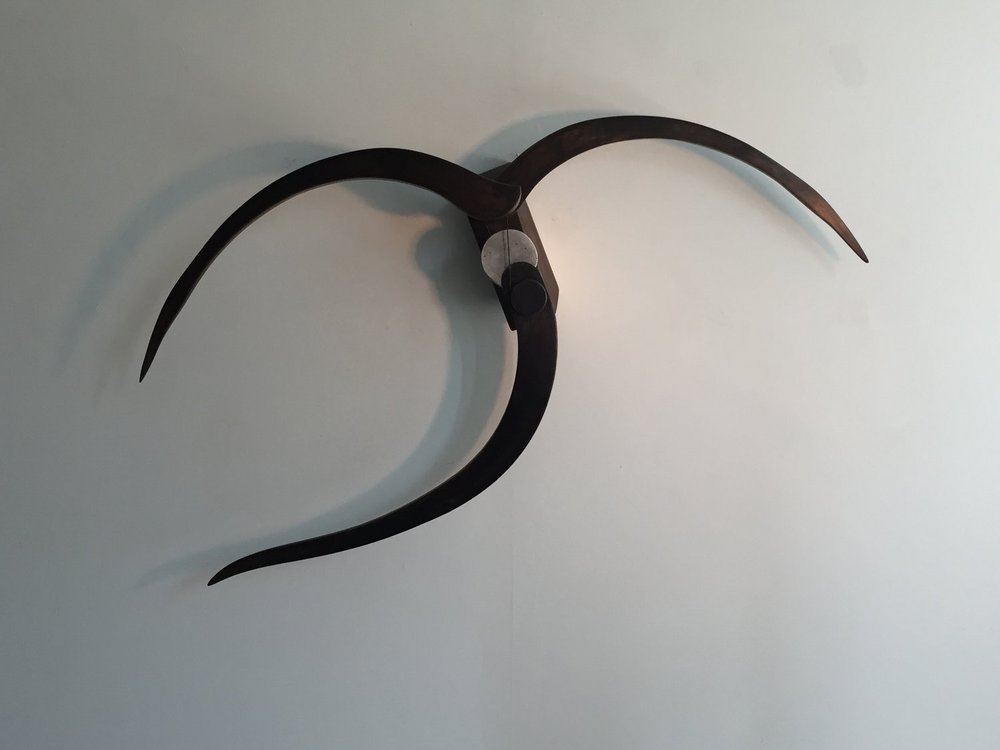

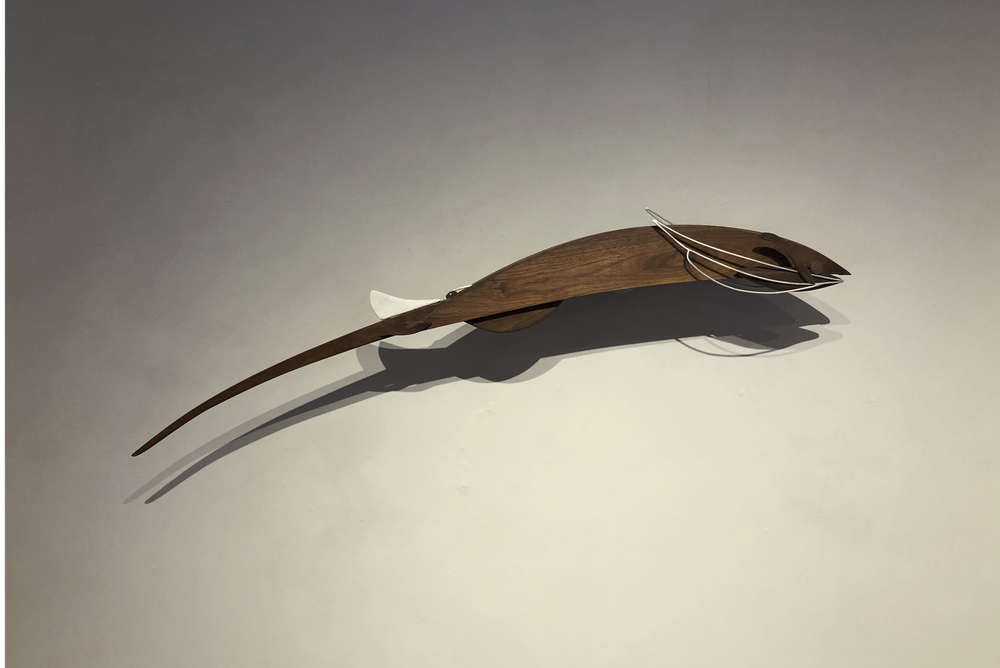

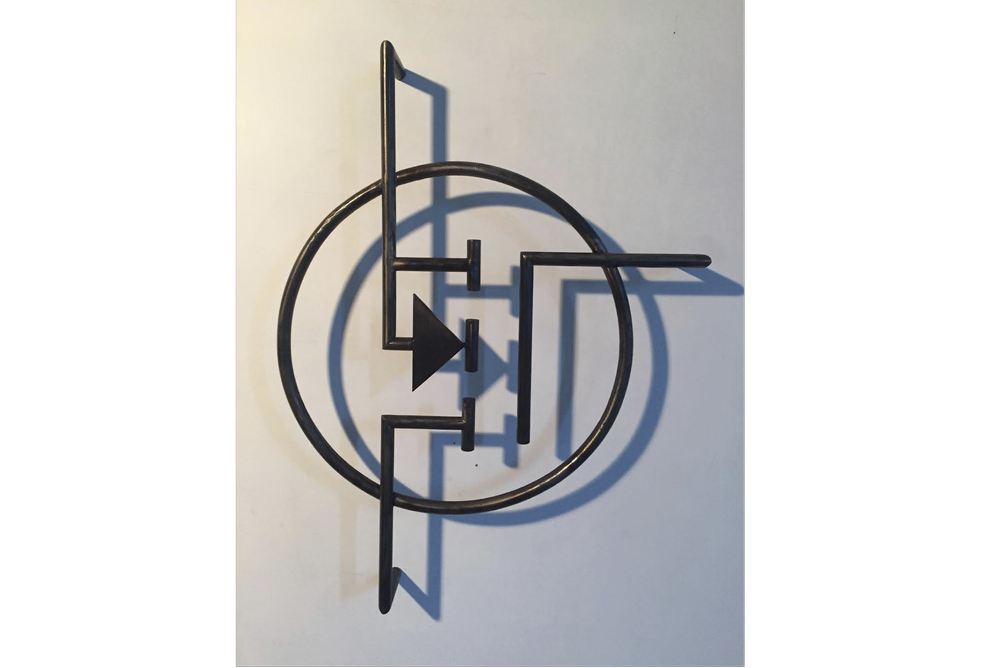

Mark Andreas’s work is informed by his past experiences as a craftsman, carpenter, furniture maker, blacksmith, boat builder and designer. His environmentally reactive sculptures move and act with forces of nature. They combine traditional hand-crafted woodworking and metal smithing methods with modern construction techniques.
Andreas’s “Dragon” is a wall-mounted sculpture that explores the relationship between time and transformation, as well as the interaction of water, air, and solid materials which cause the sculpture to react. The viewer fills a reservoir with approximately 16 ounces of water and slowly funnels the water into the dragon’s tail. The weight of the water in the tail lifts the wings. After a few days or so, the water in the tail is drawn out through a process known as capillary action. In this piece, the capillary action will ultimately cause the water in the tail to evaporate and, as a result, the wings are slowly lowered until they reach their resting point.
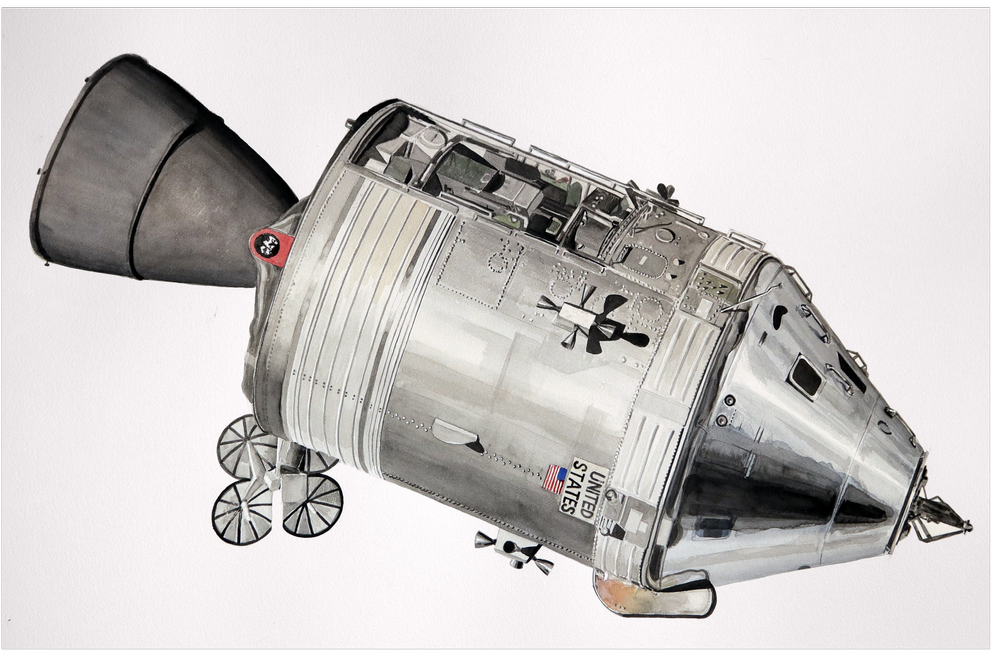
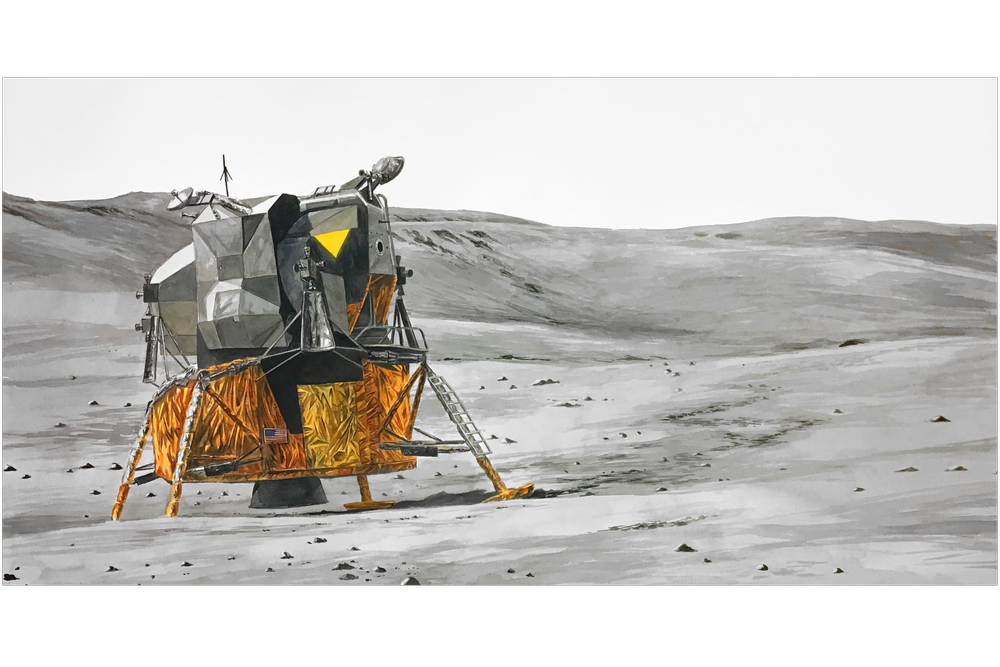
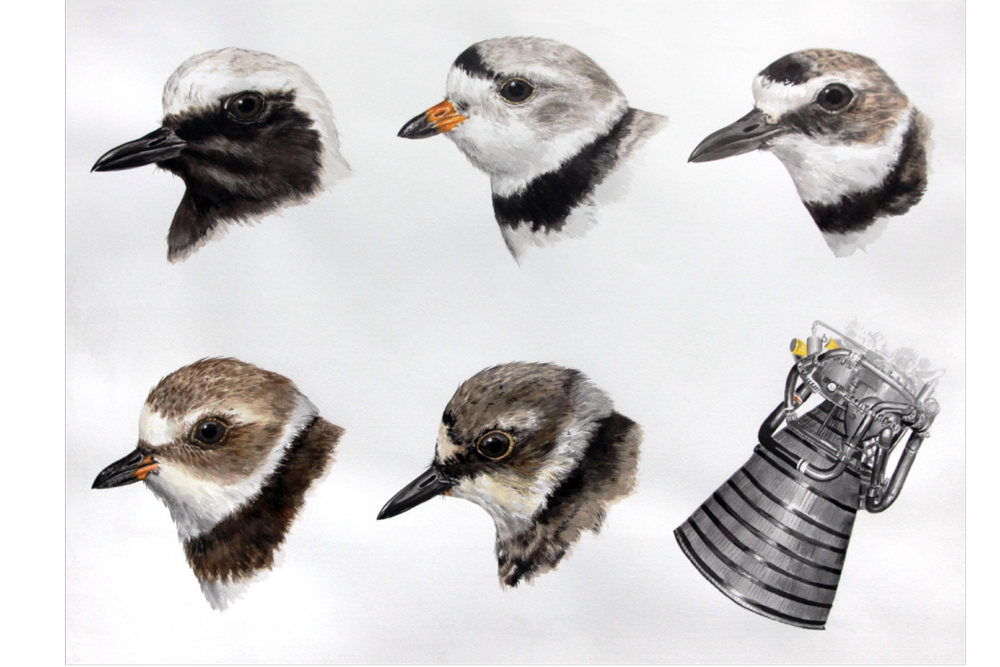
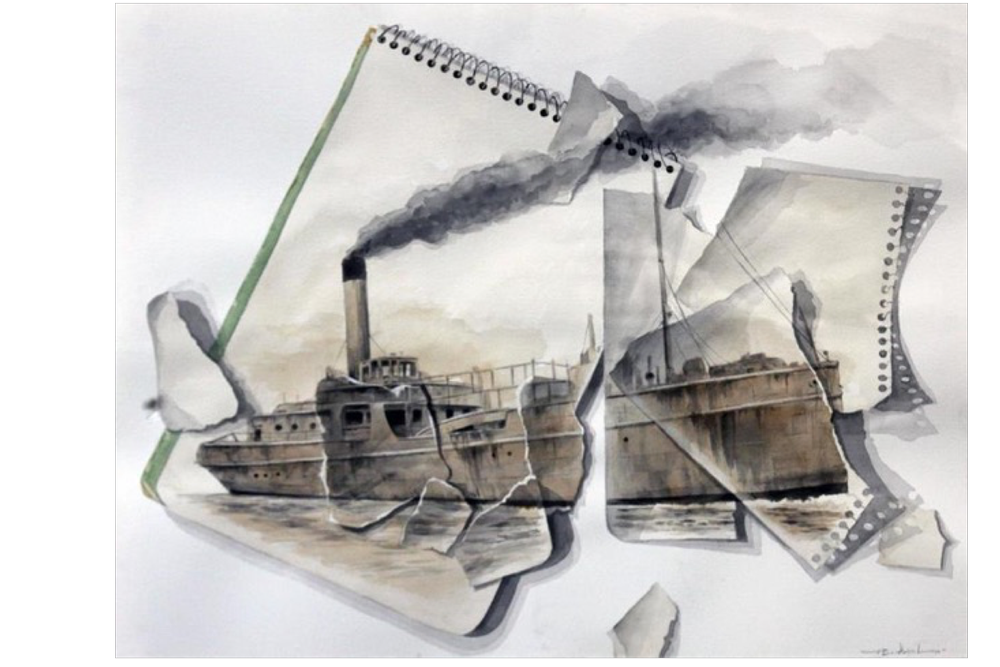
Thomas Broadbent’s large-scale watercolors have an absurdity to them that borders on the surreal: they are plausible scenarios, but the unlikely combination of elements, objects, and animals are otherworldly and common at the same time. Broadbent’s thoughtful, introspective watercolors touch on the relationship between man and nature, sometimes broaching more existential questions.
Broadbent’s paintings of human forays into space exploration look at the machinations of the space program from the point of view that John James Audubon might have looked at a swallow-tailed flycatcher. Broadbent’s close attention indicates that these things are part of something greater, which we will never fully understand.
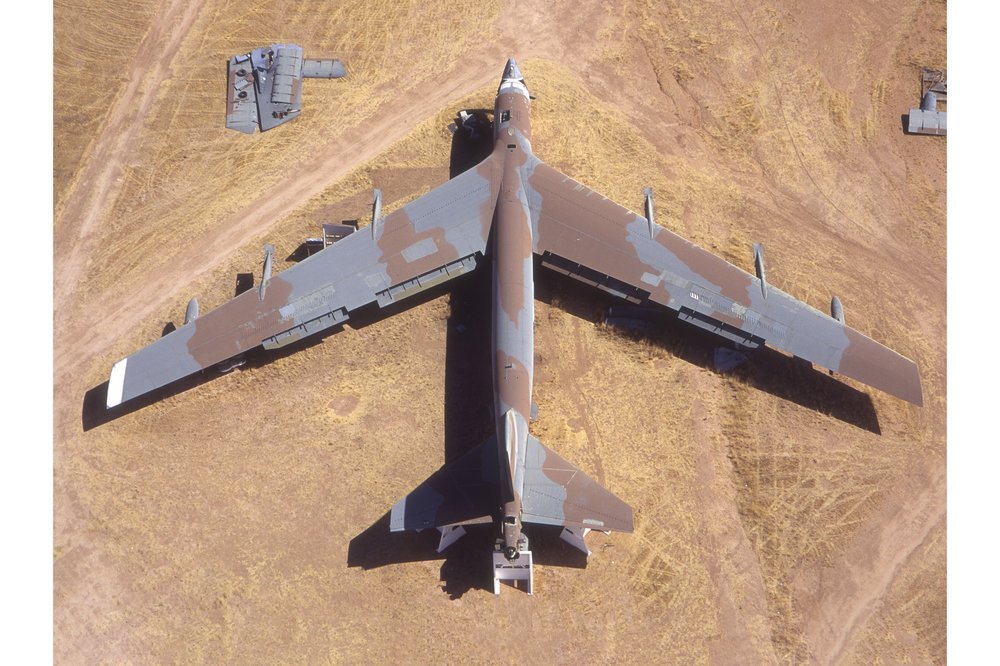
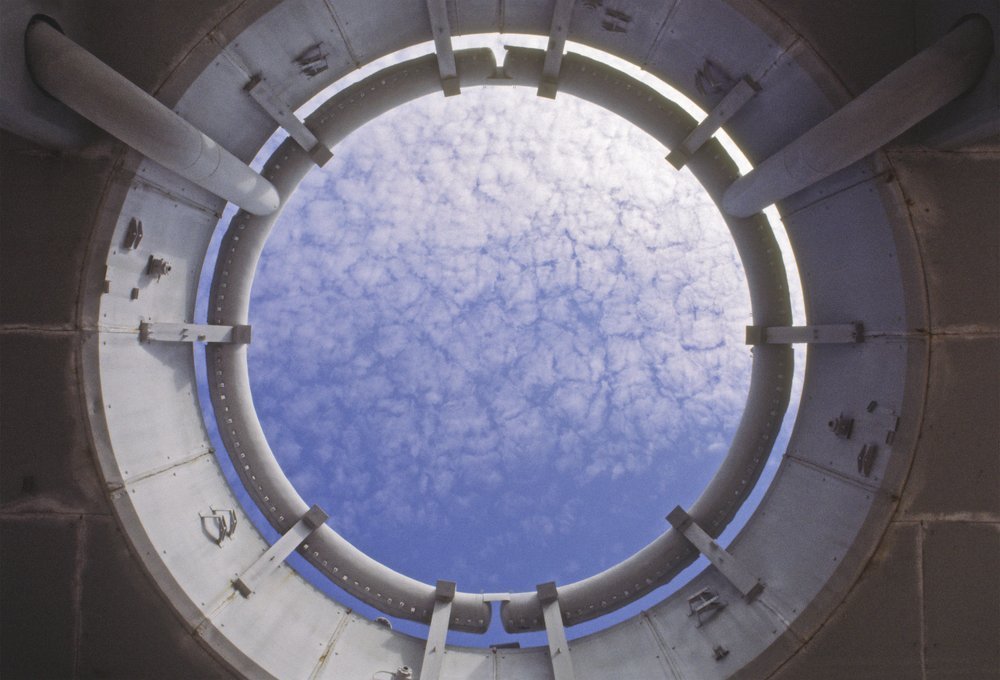
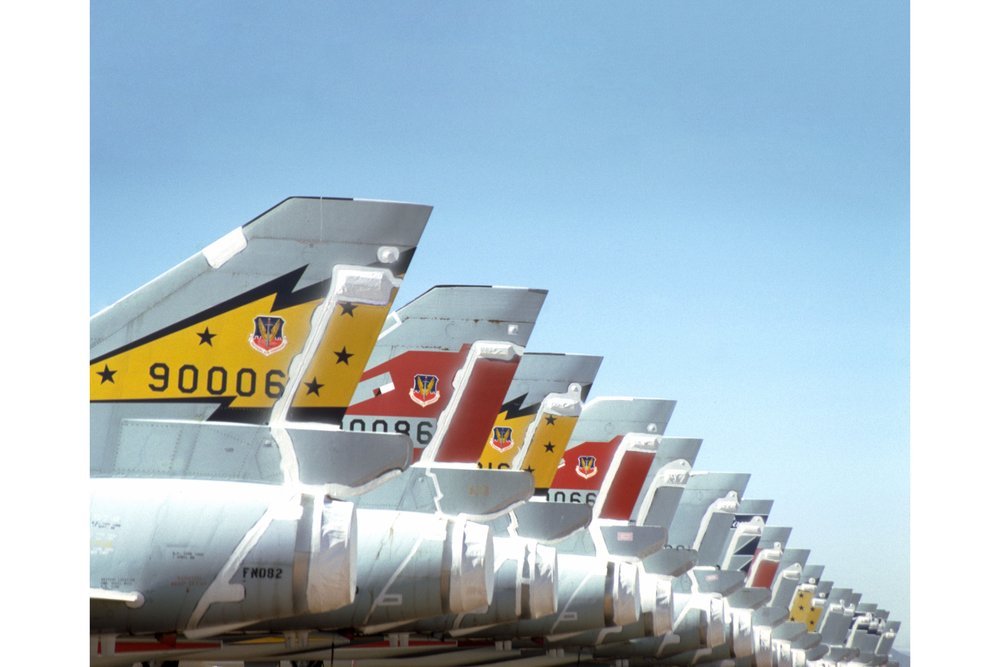
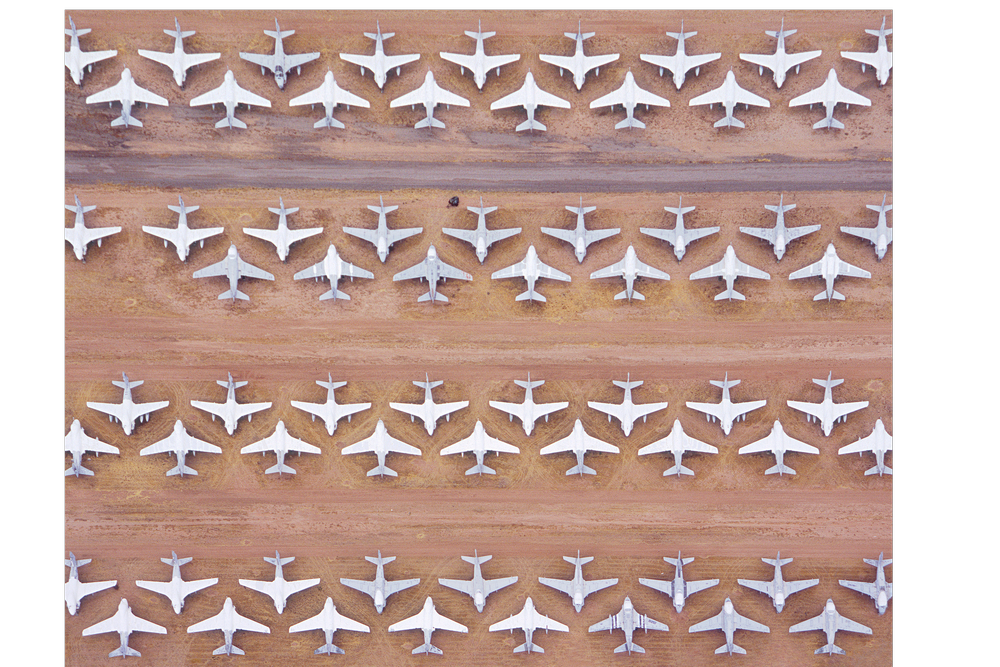
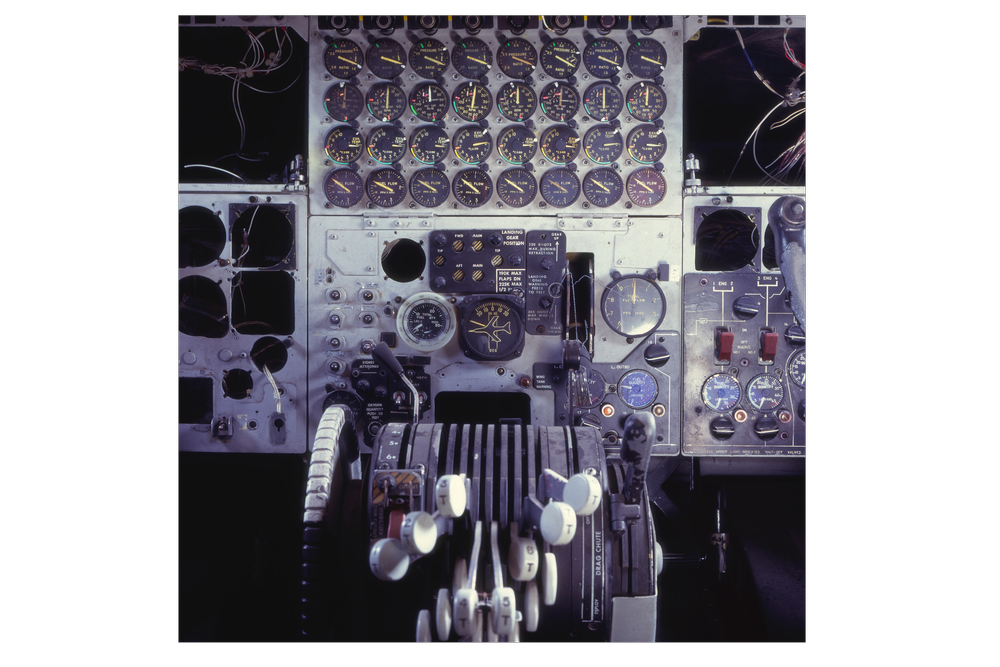
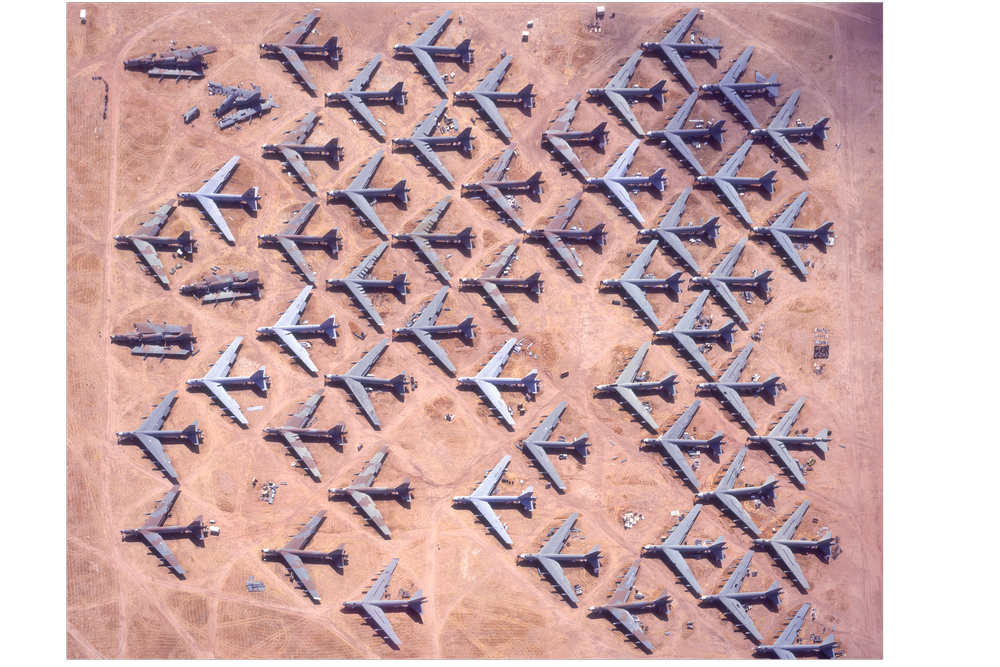

Phillip Buehler’s interest in modern ruins started in 1973 when he rowed out to the then-abandoned Ellis Island. He has continued to document twentieth-century ruins around the world, seeking to rescue the past, one step ahead of the wrecking ball.
Buehler’s series “(UN)THINKABLE,” is the culmination of 25 years of Phillip Buehler’s work photographing remnants of the Cold War throughout the United States and Europe. Buehler has visited NATO air bases, Cape Canaveral, the Airplane Graveyard, missile bunkers and silos (even within New York City’s borders) among many other sites that are historic, and yet hidden, forbidden, and forgotten. In Buehler’s aerial photographs from a military airplane storage yard in Arizona, the repetition of the same model of bomber is so abstractly pattern-based that the overall effect begins to look like a Middle Eastern tapestry.
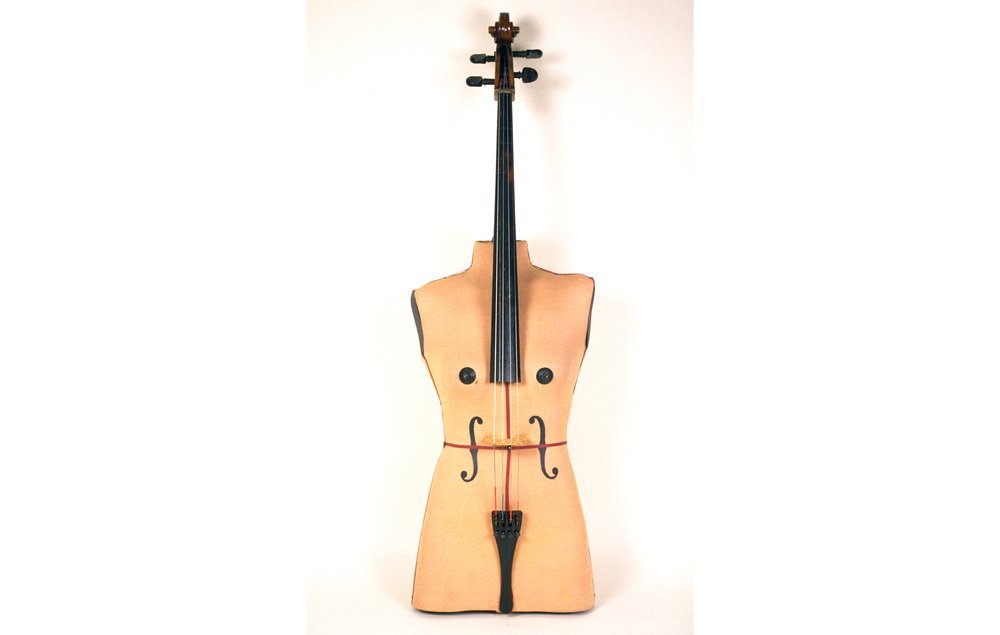
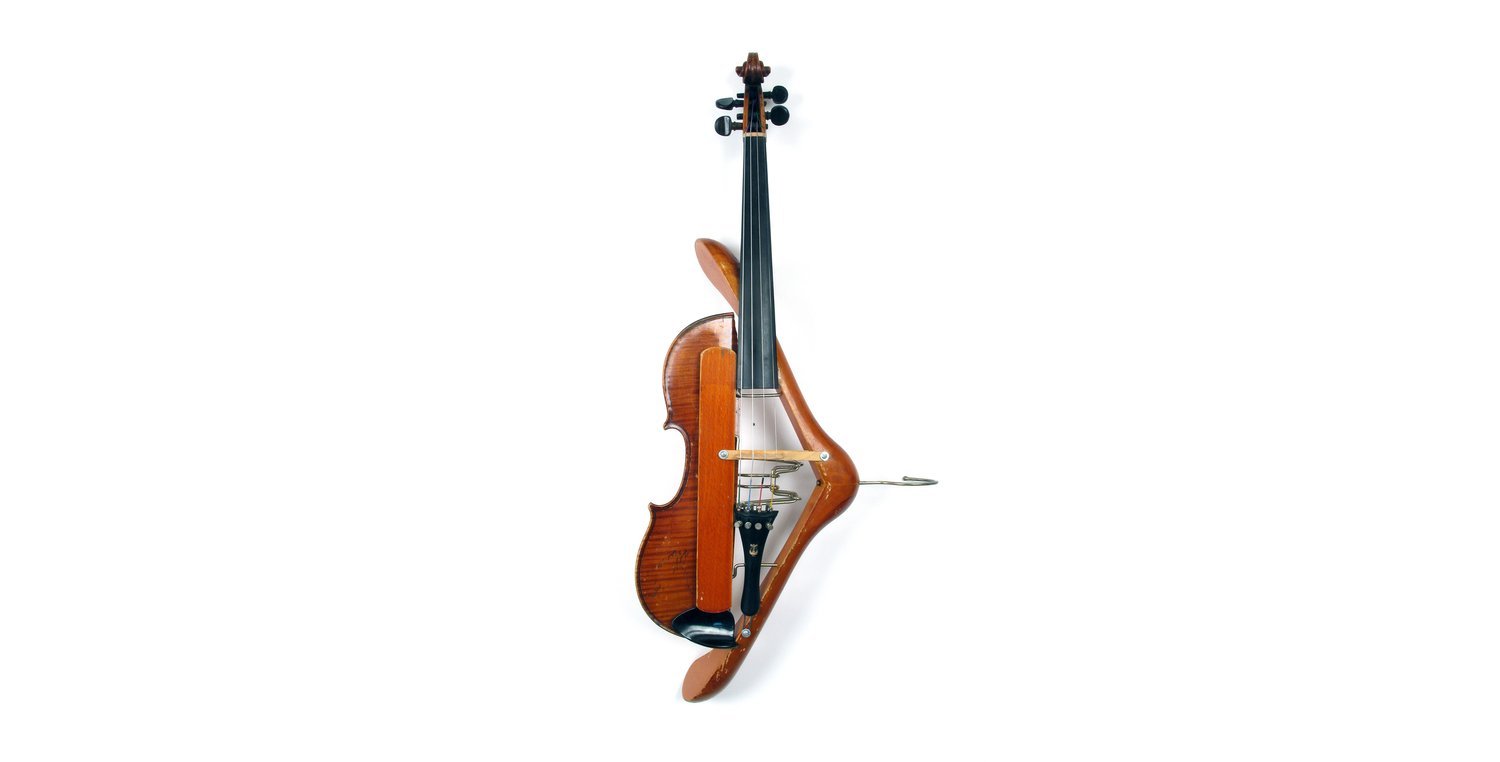


Ken Butler’s hybrid musical instrument sculptures explore the interaction and transformation of common and uncommon objects, sounds, and altered images. Function and form collide in the intersections of art and music.
Created primarily from urban detritus, the hybrid instruments express a poetic spirit of reinvention and hyper-utility as hidden meanings and associations momentarily create a striking and re-animated cultural identity for common objects. Bridging fine art, craft, and music, the hybrids exist as ergonomic functional musical instruments as well as sculpture; they are constructed from readily available consumer objects designed to perform a different function, and when amplified are shaped with cutting-edge sound processing allowing artful musical sounds and expression.
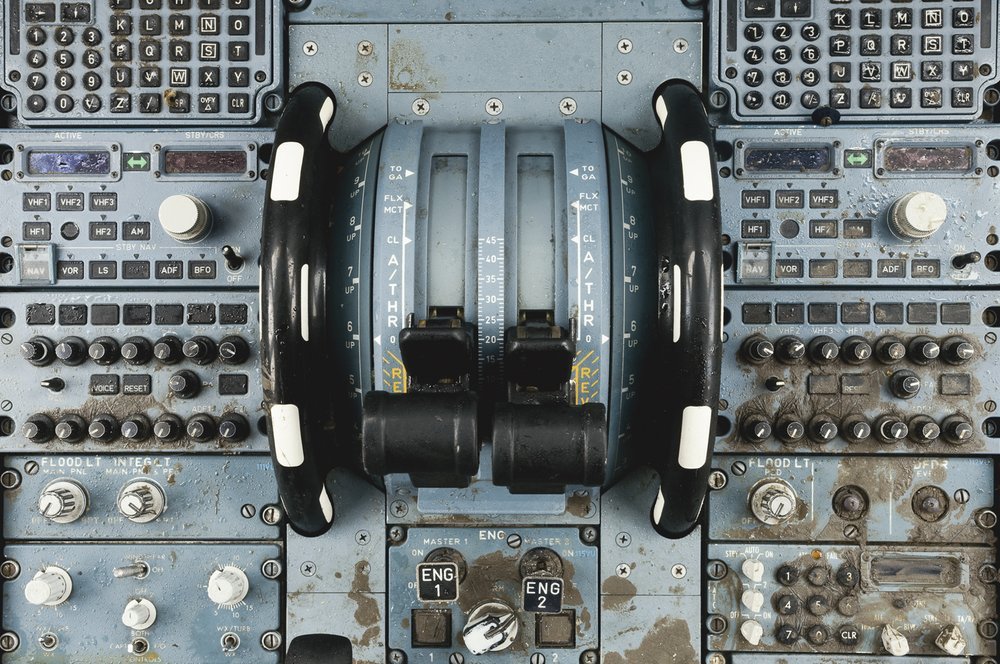

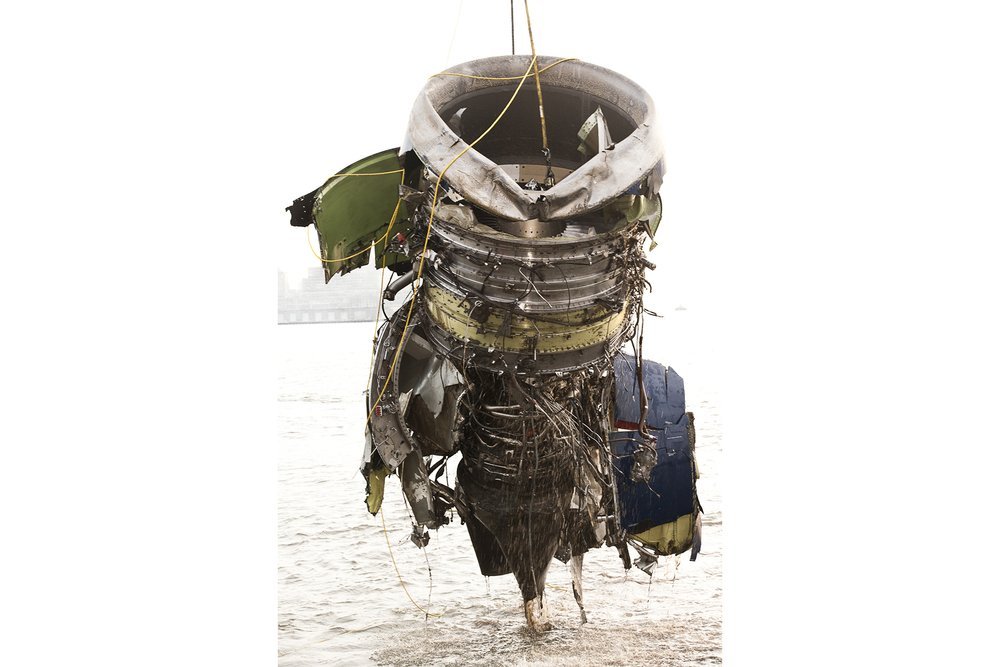
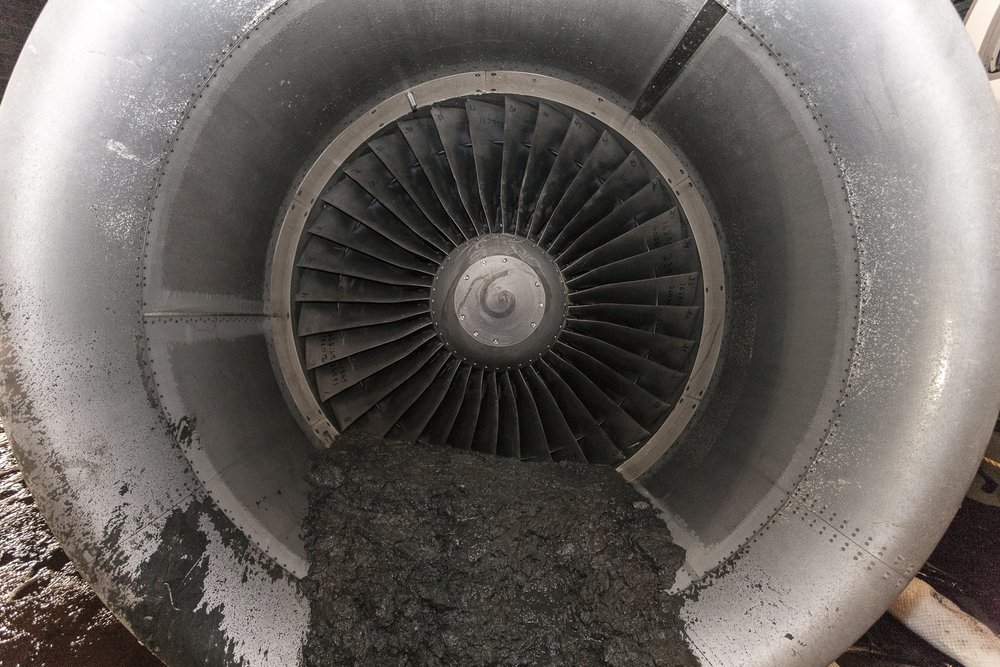


Stephen Mallon is known for his photographs of big (with a capital “B”) things crashing, sinking, levitating, being dismantled or constructed. In “American Reclamation” many of the subjects are small bails, stacks, compressed cubes, mounds, random/shapeless units, and swirling vortexes. Light gleams off the corners and facets of gears and chrome strips or fades indistinctly into bails of office papers that have been squished into abstract forms.
In this series of photographs, Mallon includes images of industrial recycling in the United States. His photographs capture images of the salvage and repurposing of immense machinery, from the overwhelming accumulation of stripped metal components to intact vessels being sunk to make artificial reefs.
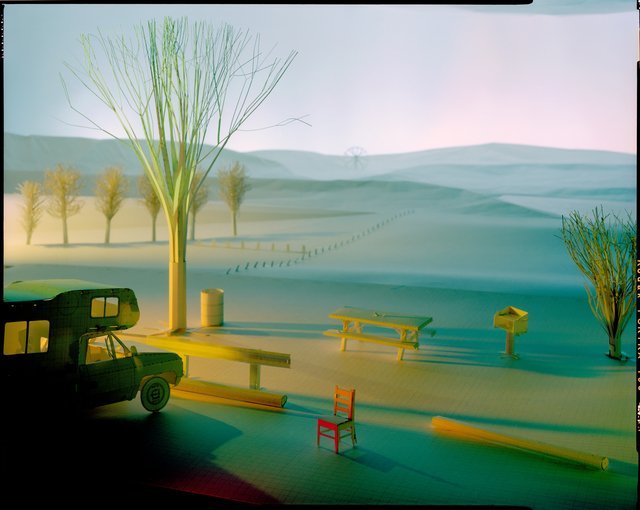
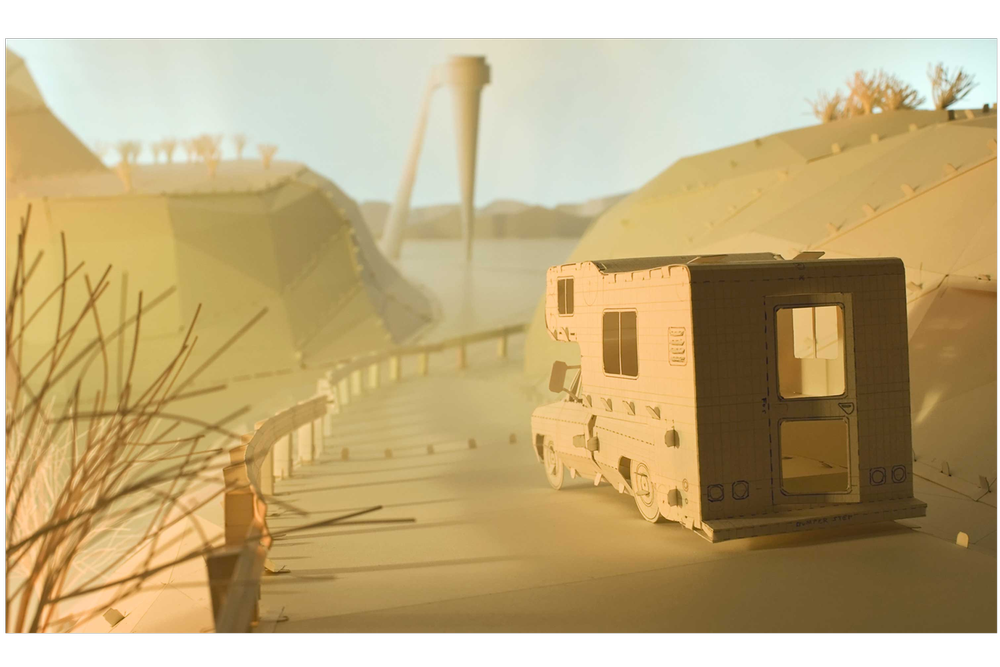
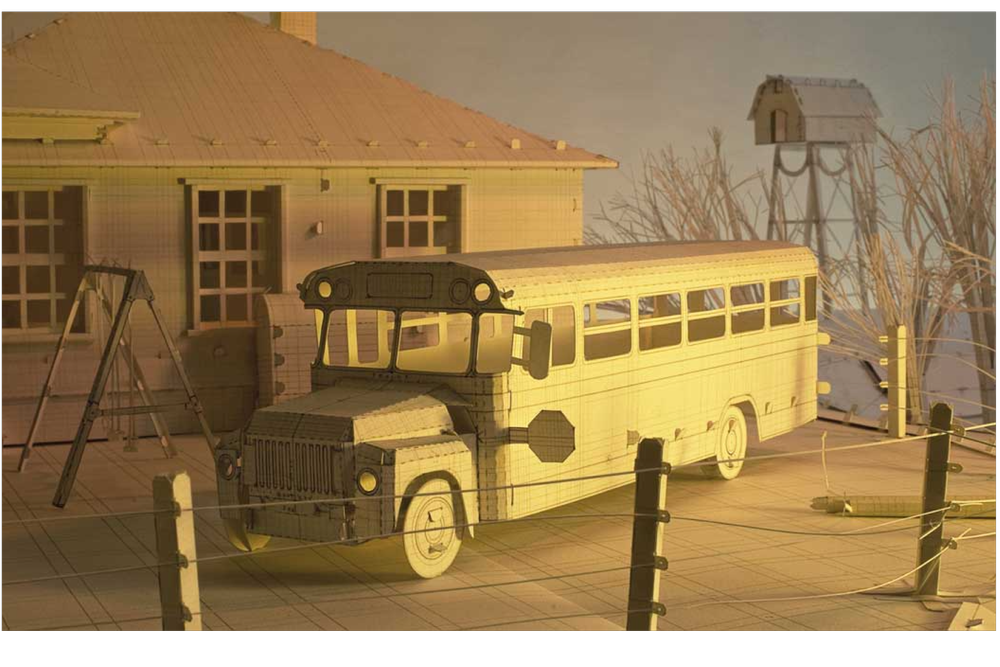
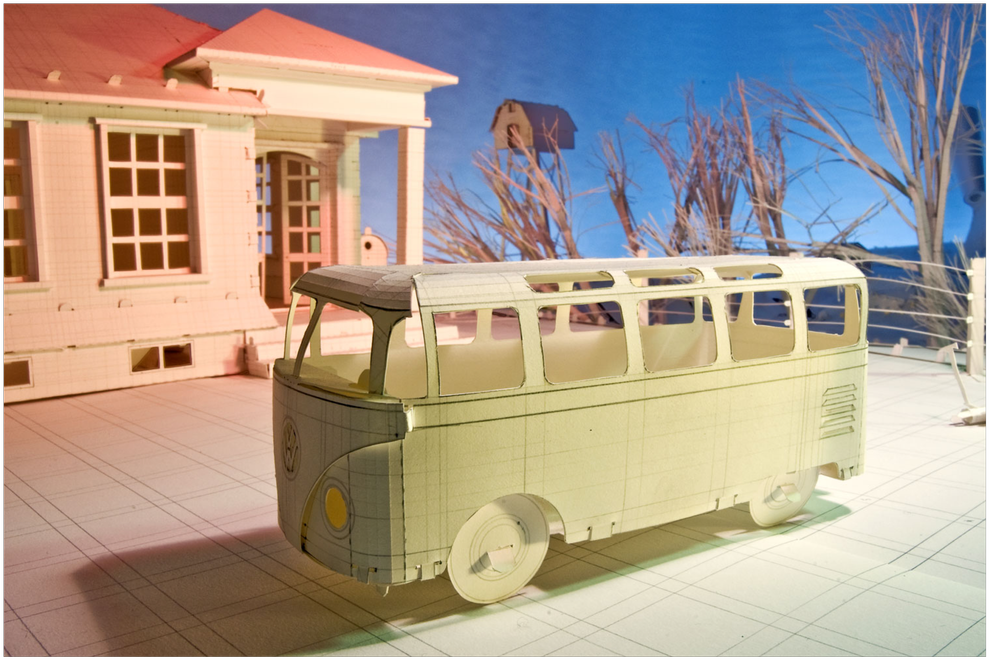
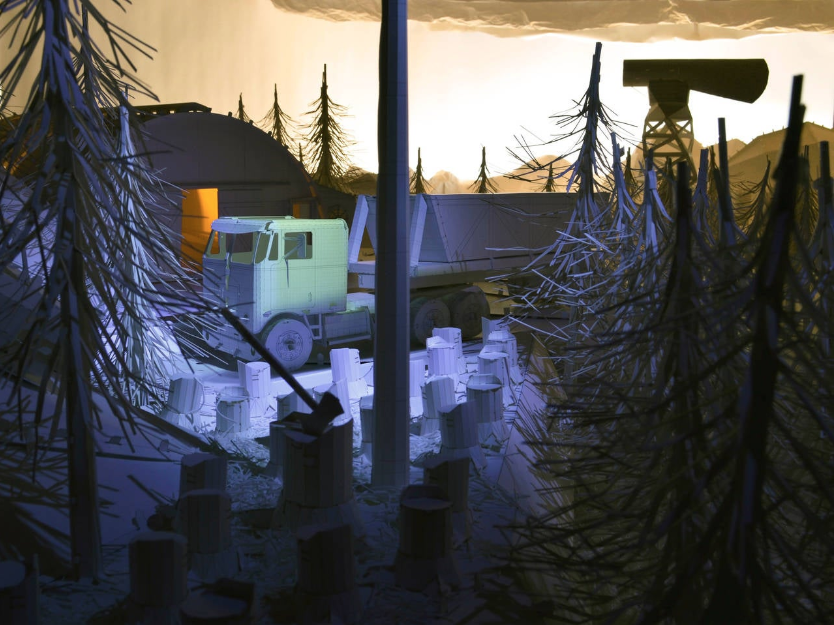
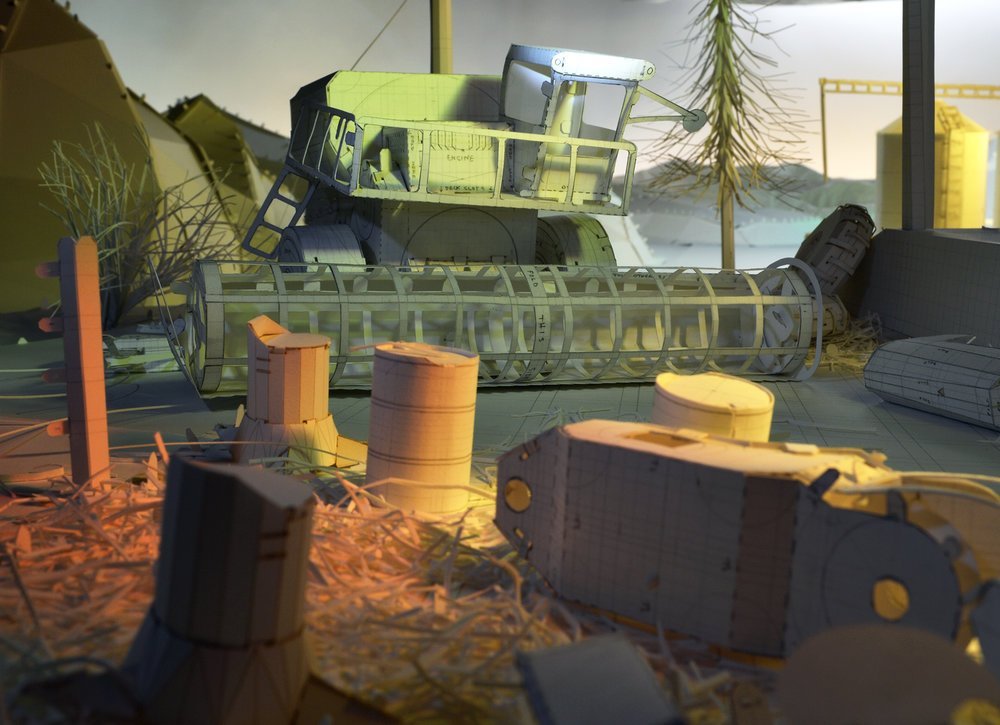
Ken Ragsdale’s magical photographs are achieved through the artist's composition of fabricated paper structures, which depict memories and landscapes of Middle to Northwest United States. Ragsdale’s forced-perspective paper diorama photographs are clear descendants of the Hudson River School of painting.
Within Ragsdale’s wistful landscapes his love of equipment is self-evident. His lush landscapes are interspersed with trucks, tractors and classic cars. These machines become the subject of the compositions and are stand-ins in the absence of their owners.
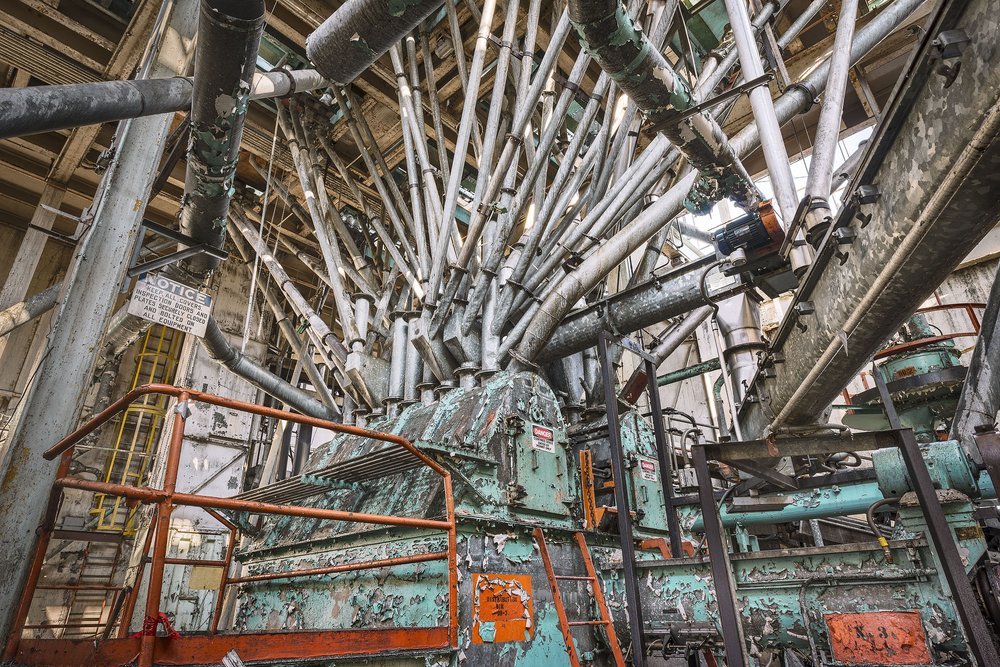

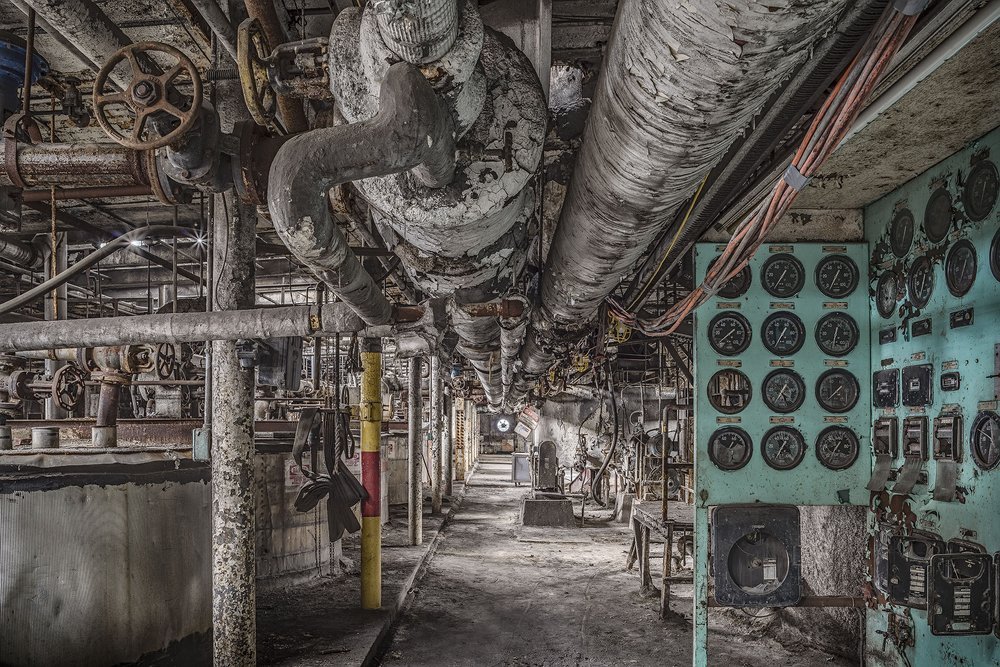
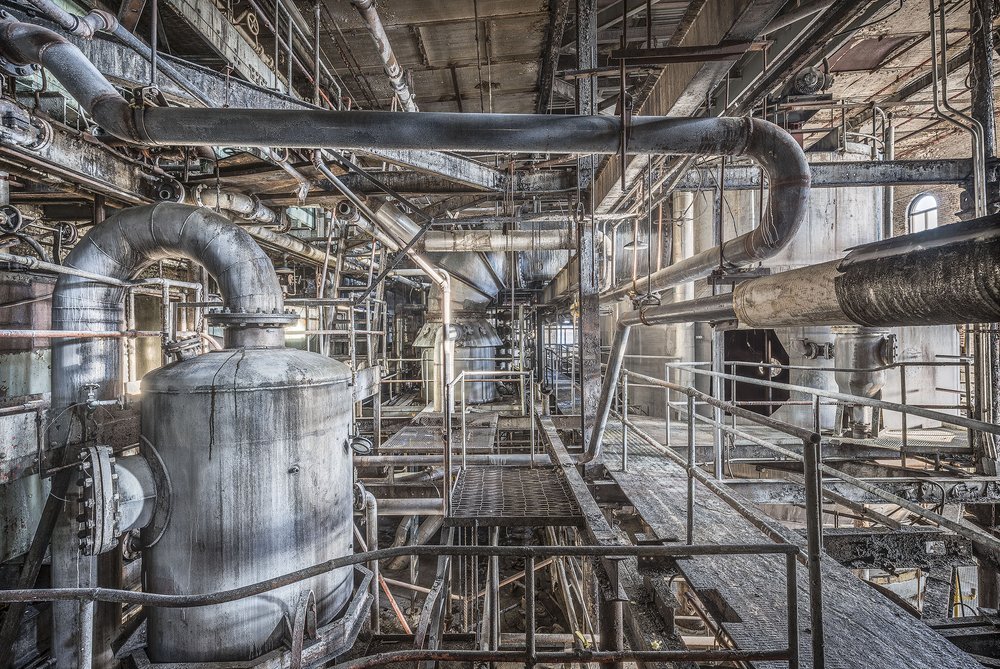
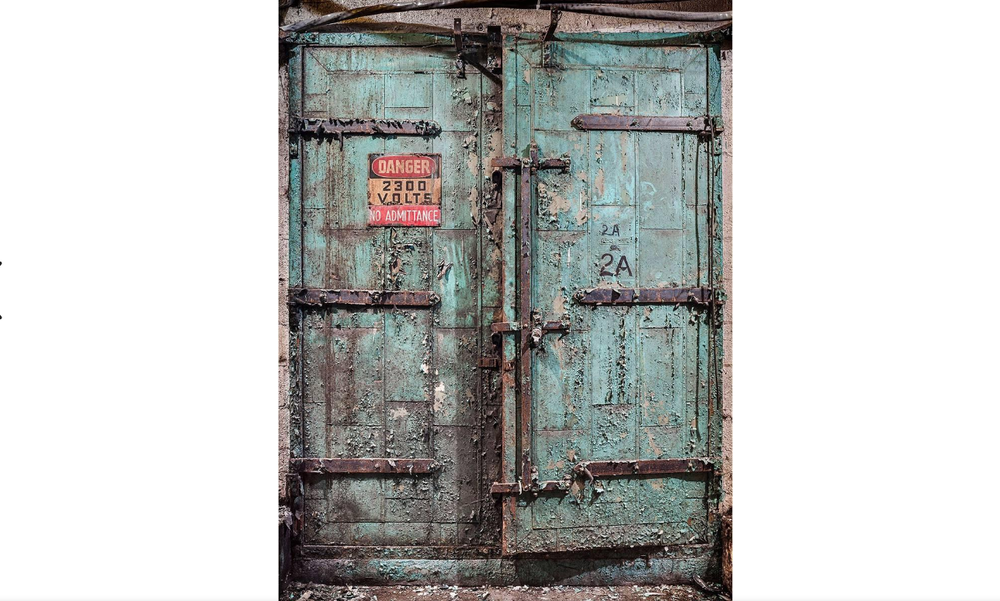
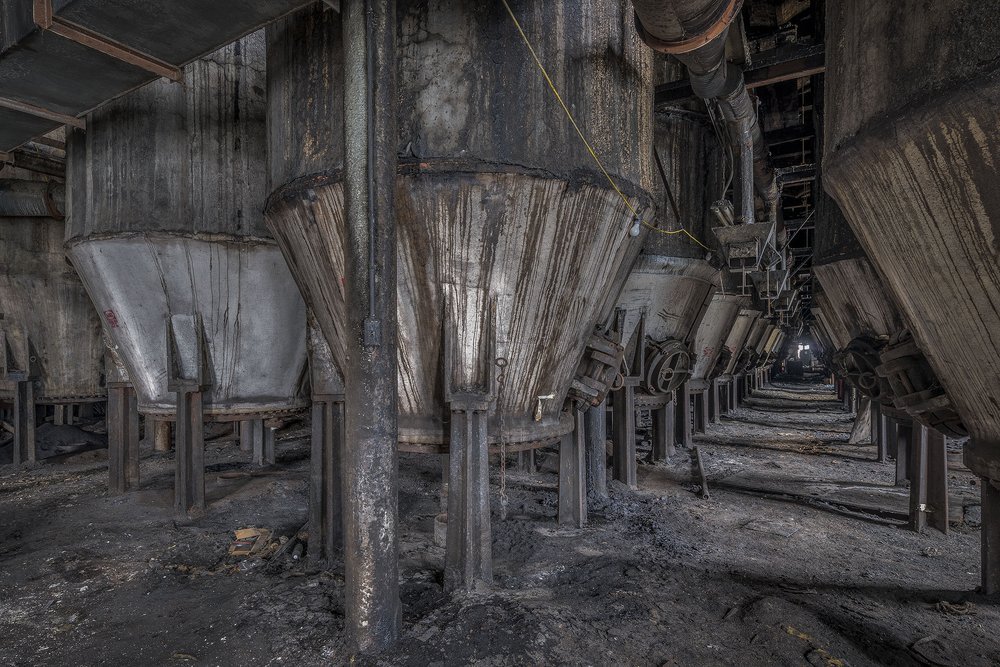
Paul Raphaelson’s series, entitled "Sweet Ruin," features photographs taken at the site of Brooklyn's Domino Sugar Refinery. Raphaelson's images chronicle the final state of the once-bustling industrial complex before its dismantling and demolition.
In 1919 4,500 people worked in the bustling sugar factory in 1918, monitoring gauges, dropping unrefined sugar down chutes, and sending boxes across conveyors. This turn-of-the-century mechanized compound saw a gradual decline until it closed with only 220 workers in 2004. Raphael’s photographs show the manufacturing devices that were repaired and re-repaired over the last century. Raphaelson’s photographs recall industrial mechanization from a bygone era reminiscent of the factory in Roald Dahl's “Charlie and the Chocolate Factory”. The multitude of crusty tubes and chutes, extending from the receptacle in his “Bin Distributor” give the impression of tentacles from a huge rusty cephalopod ruling over its oxidized domain.
WORKS INCLUDED IN “GADGETS, GISMOS AND MACHINES”:
STEPHEN MALLON
THOMAS BROADBENT
MARK ANDREAS
KEN BUTLER
PAUL RAPHAELSON
KEN RAGSDALE
PHILLIP BUEHLER




































